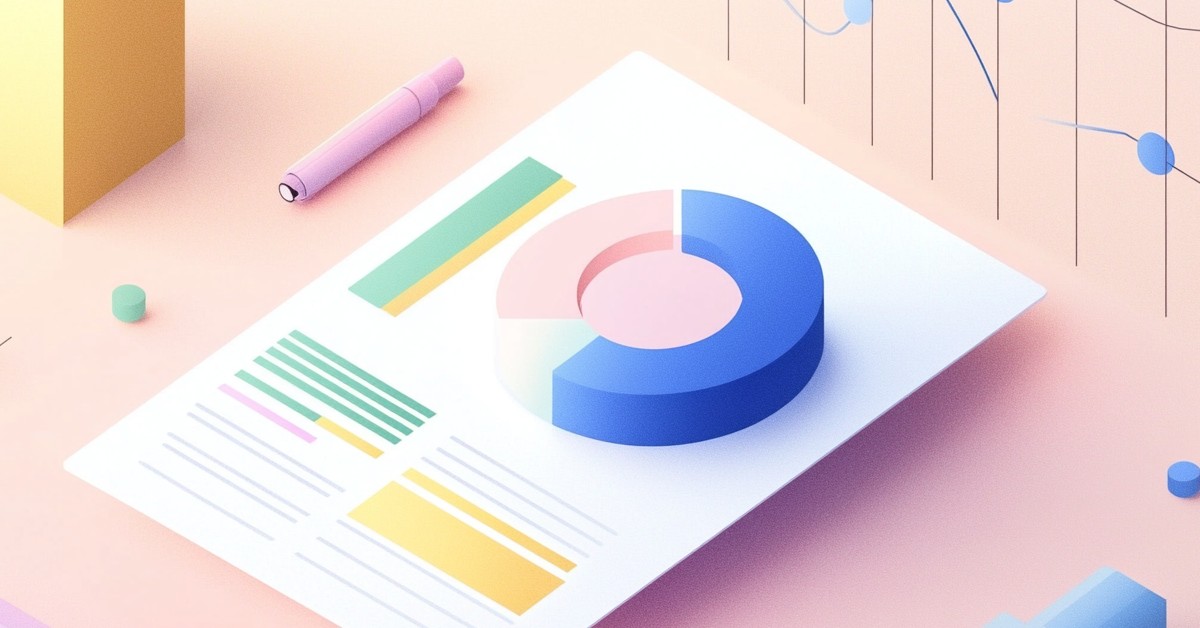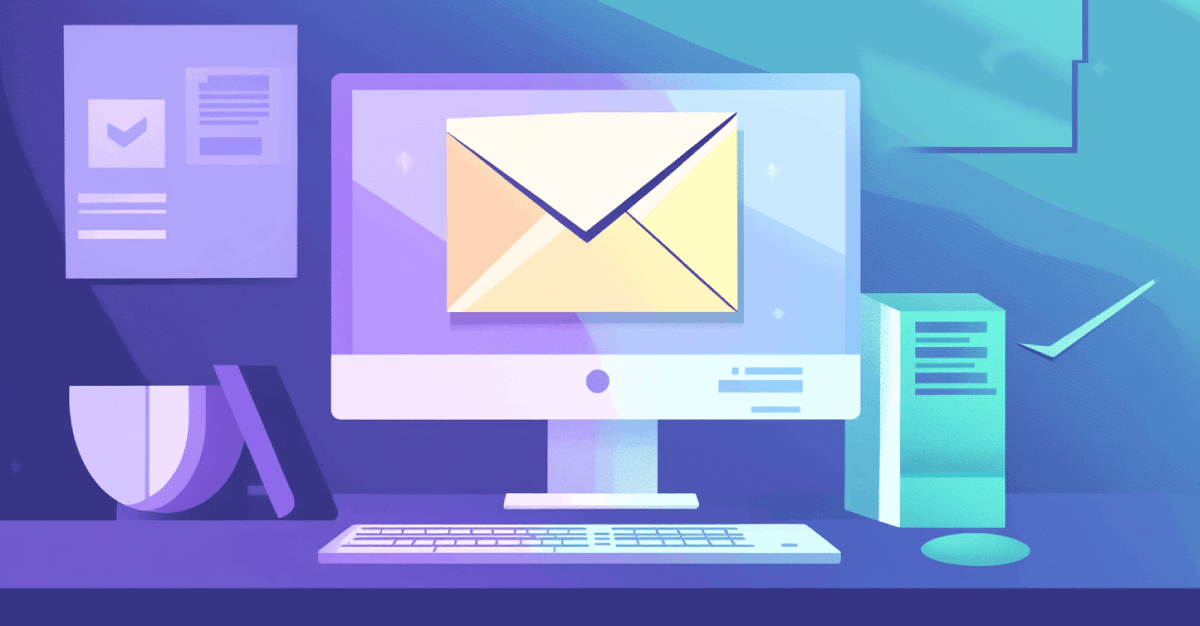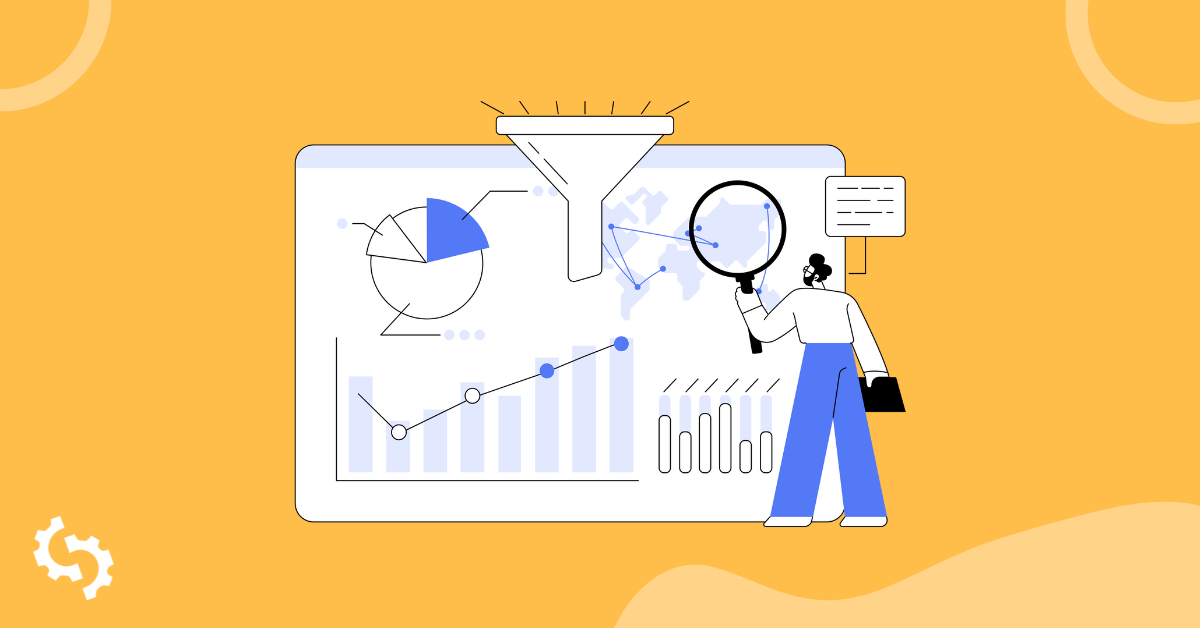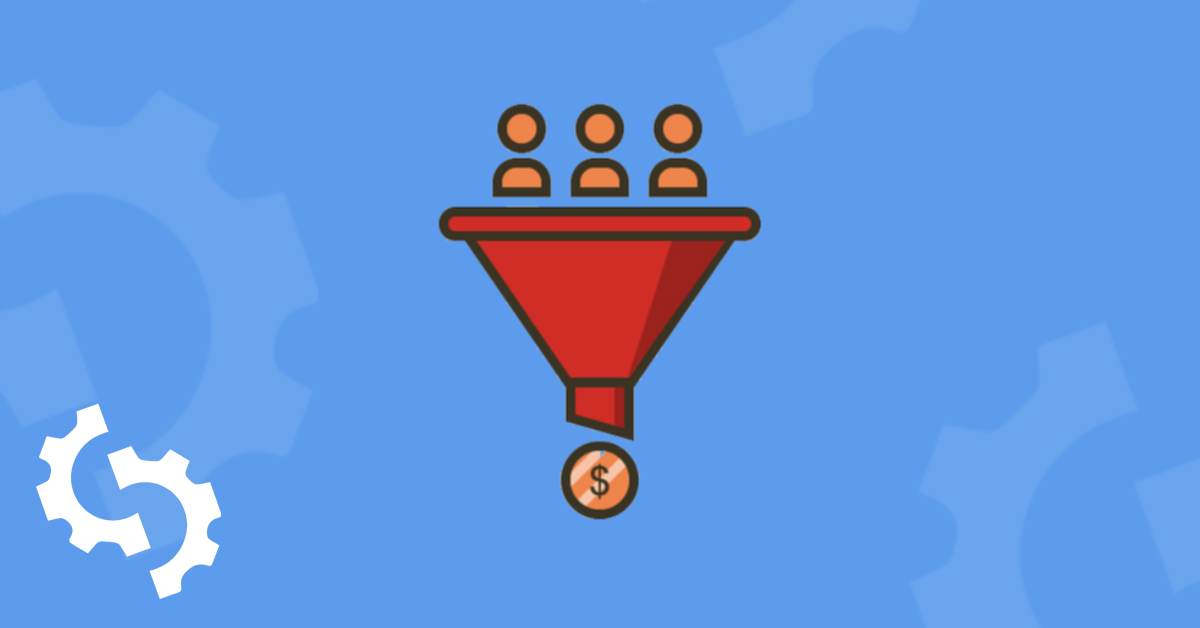
Any business offering products or goods for sale is attempting to shepherd potential customers from general awareness of the business and its offerings to becoming loyal repeat buyers. Conversion funnel optimization can help you define and streamline this process.
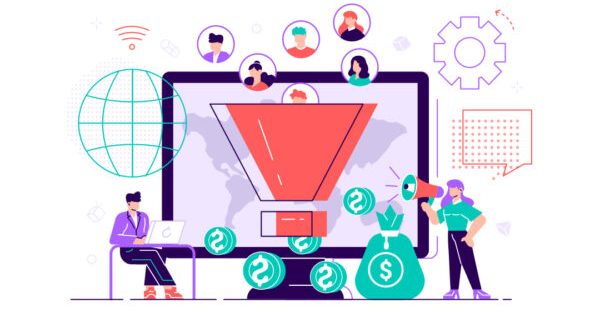
Image source: Business2Community
What is a Conversion Funnel?
A conversion funnel is the path that a potential customer takes from first visiting your business’s site to making a purchase and (ideally) becoming a brand advocate for your business.
This conversion funnel definition is often drawn as a funnel to make it easier to visualize. At the top of the funnel, you have many prospects visiting your site or casually interacting with your brand. This is why it’s the widest point. As you move downward and the funnel narrows, fewer prospects complete all the actions that take them all the way to purchase.
This process is often called the sales funnel because it tracks the steps that a customer takes to reach the sales point.
Conversion Funnel Objectives
Each stage of conversion funnel marketing comes with a particular objective. When designing a new conversion funnel for your business, you should label each step of the customer’s path with the desired action.
At the top of the conversion funnel, this could mean generating more visitors to your business site; you want more people entering the funnel. Intermediate stage objectives can include creating an account, adding products to a cart, signing up for a subscription, or watching a tutorial video.
The tip of the funnel almost always represents completing a purchase. More recently, conversion funnels have been reimagined to include post-purchase objectives like leaving a positive review, referring a new customer, or completing a repeat purchase.
If your business is not clear about what actions you want buyers to complete at each stage of their path towards a purchase, then your shopping experience is likely not communicating these objectives to your customers and they might get lost or lose interest along the way.
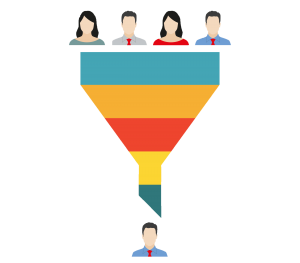
Conversion Funnel Stages
The conversion funnel marketing concept is traditionally represented by five main stages, though there are many variations.
Awareness
At the top of the funnel, customers are aware of your business. They may be first-time visitors to your website and are exploring your brand to learn more.
At this stage, the customer is probably actively exploring other businesses too. Each lead will conduct research and perhaps quickly scan the content of a website to determine if the products offered are a good fit.
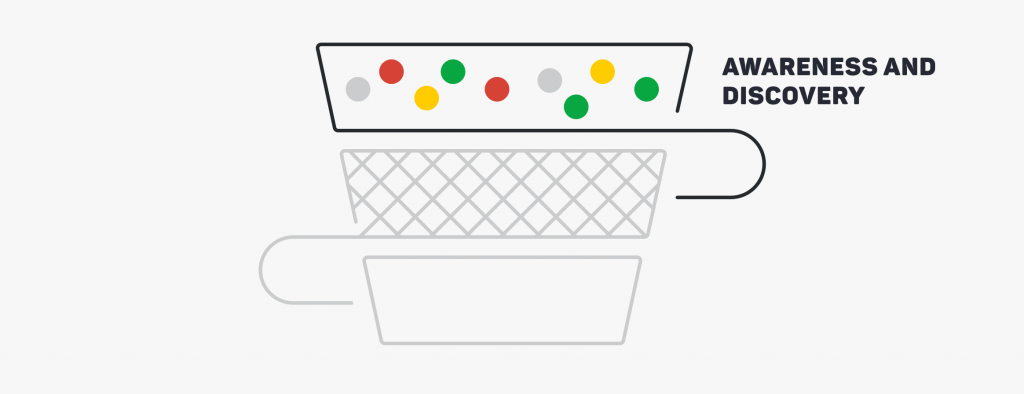
Image source: Pipedrive
For example, someone searching for linen shirts might conduct a search and land on your eCommerce site, where he notices that you offer a wide variety of linen apparel. He is now in the awareness stage of your conversion funnel.
Goal: Capture more leads to generate greater awareness of your business.
Interest
At this stage, potential buyers are learning more about your business, comparing it to others, and deciding if it matches their needs.
The shopper searching for linen shirts might notice that your store only offers novelty prints. If he is in the market for solid colors, he will exit your funnel at this point. This is not necessarily a failure of your conversion funnel eCommerce model; he was simply not your target customer.
Customers who are specifically looking for linen shirts with novelty prints will be interested, and you can further interest them by providing appealing images and social proof. At this stage, it’s a good idea to incentivize email opt-ins so you can continue marketing to this lead and build interest and trust with him.
Goal: Make your products/services more appealing to your ideal customer.
Desire
This is a crucial stage of the conversion funnel. Prospects have demonstrated some level of interest in your business, and now is the time to nurture them along so they finally complete a purchase.
Lead nurture sequences are most effective at this stage, as are informational resources like video demos, social proof, and how-to-use posts.
Goal: Encourage leads to see your business as THE solution to their needs
Action
This is the step where a prospect converts into a customer. For the purposes of conversion funnel eCommerce stages, this happens when the lead makes a purchase.
For a website conversion funnel, completing the purchase can involve several steps on different web pages, so it’s important to make the process as easy as possible so your customer doesn’t abandon their cart at the last moment.
Goal: Induce leads to complete a purchase.
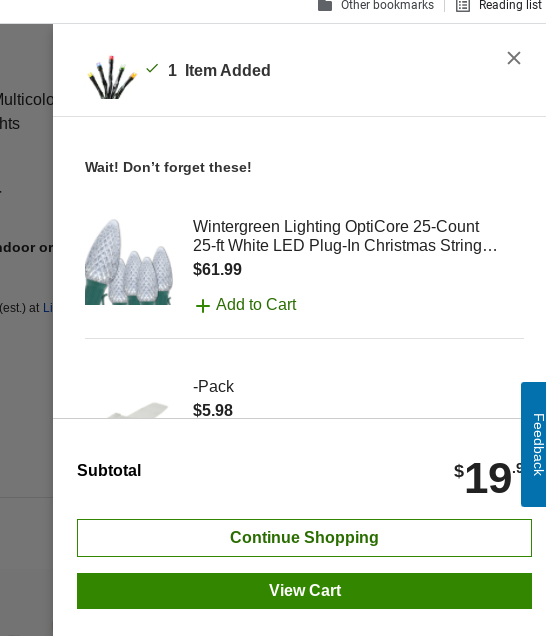
Re-Engagement
The conversion funnel is not done yet! Research indicates that retaining repeat customers yields far greater ROI than constantly trying to capture new leads. Repeat customers tend to spend more on subsequent purchases than first-timers because they have already established trust with the business.
The re-engagement stage is all about ensuring the best possible post-purchase experience for your customers while offering them incentives to return.
Goal: Encourage repeat purchases and referrals.
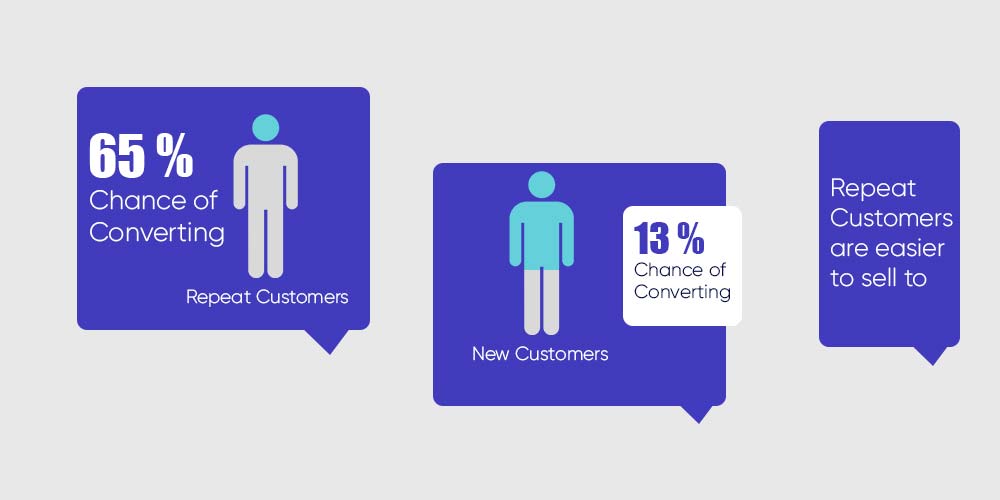
Image source: CED Commerce
Conversion Funnel Optimization
So, we’ve answered what is a conversion funnel? And we’ve covered the different stages that compose it. Now, how does conversion funnel optimization work to drive larger numbers of prospects toward the tip of the funnel?
Here are five suggestions for conversion funnel optimization - one for each of the conversion funnel stages that will patch up the leaks and deliver more people to the action and re-engagement stages.
Optimize Your Business Site for SEO
The first step to attracting more visitors to your website conversion funnel is to help them find you in the first place.
Making sure that your site ranks for the top phrases that your ideal customers are searching for is the best way to increase the number of leads who enter your conversion funnels at the awareness stage.
Not sure how your site stacks up to the competition when it comes to SEO? Check out our free SEO analysis tool here.
Clearly Convey Your Unique Selling Proposition
At the interest stage, customers are actively comparing your business to its competition. This is the time to clearly and persuasively explain your USP.
A potential customer may research many brands to find the solution to his problem. To optimize your funnel for the interest stage, you need to convince him that your business offers the best solution possible.
One way to do this is to offer clear visuals of your products on the landing page of your site. A clear summary of your USP partners with these images to immediately pique the interest of casual visitors and encourage them to explore more.
Warby Parker’s landing page clearly conveys their main product - prescription eyeglasses starting at only $95 - along with large images of their actual product. This is effective communication of their unique selling proposition - stylish glasses at an affordable price.
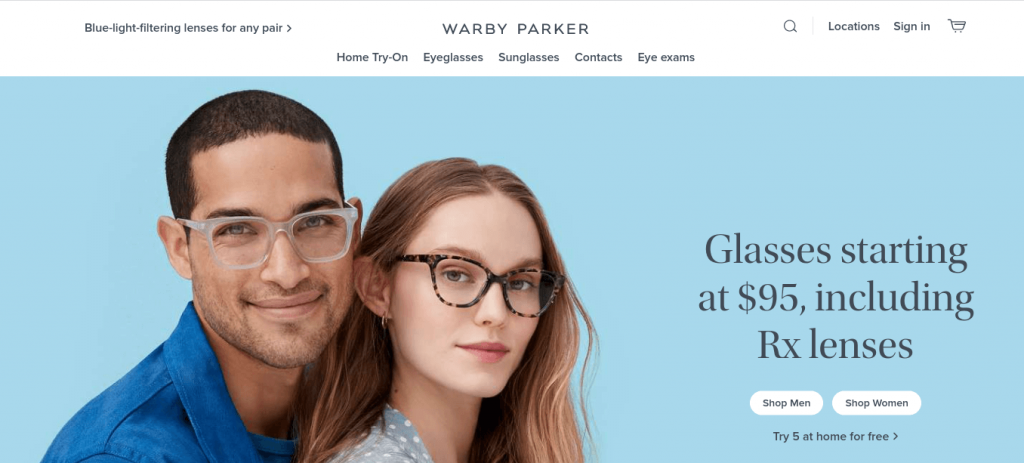
Provide Valuable Information to Your Visitors
Customers increasingly seek a reciprocal relationship with the brands they frequent. Providing them with free, valuable information increases the authority of your business and moves each customer closer to the Desire stage of your conversion funnel.
Lead magnets are a great way to do this. Offering a free download, a complimentary consultation, or a free gift with your first purchase provides additional opportunities for customers to interact with your brand and have a positive experience.
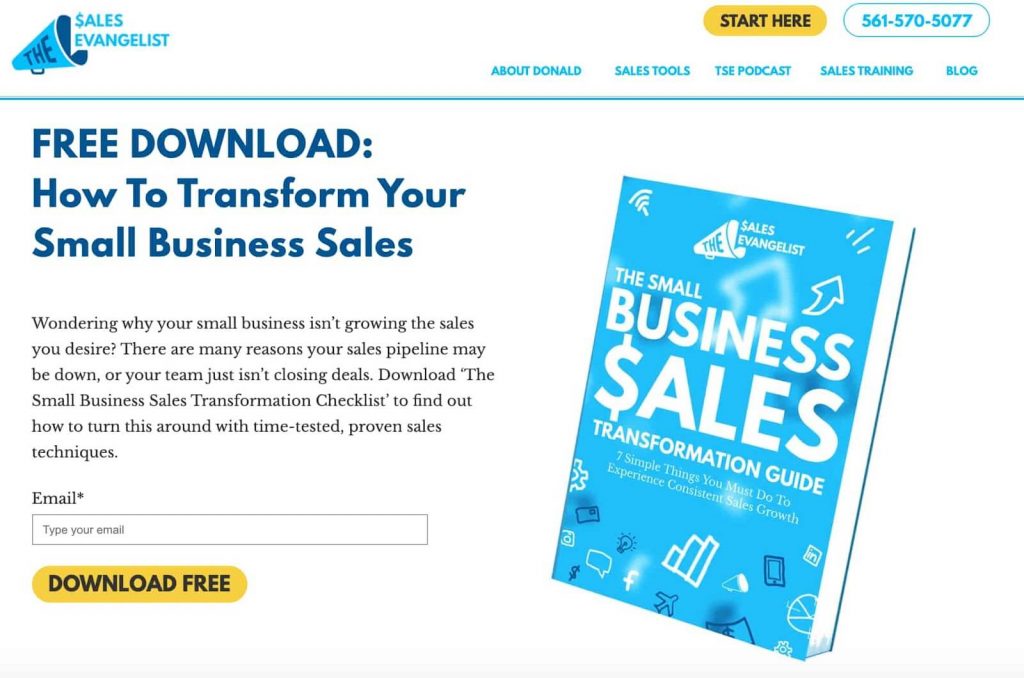
Another way to optimize the Desire stage is by offering the most comprehensive product descriptions you possibly can. Remove any questions that might raise barriers to purchase by including all possible details about your product, multiple images, video, and reviews.
This aids in conversion funnel optimization by increasing the desirability of your product.
Simplify the Purchase Process
Many customers add products to their carts only to get distracted by another webpage or frustrated by a lengthy checkout process.
Optimizing the action phase involves making purchases as easy as possible for the customer. A few ways to do this include:
- Adding “buy now” buttons to product pages and your email newsletters
- Optimize for mobile
- Offer a chatbot to help answer questions during checkout
- Remove extra design elements to minimize distractions
- Allow customers to check out as a guest
It’s a good idea to frequently walk through your site’s checkout process from the customer's view periodically. Is the process simple? Are there lengthy or confusing steps? Are shipping costs confusing or surprising?
Make the entire process as clear and simple as possible to optimize this stage of the conversion funnel.
Provide a Loyalty Program
Finally, offer encouragement for customers to return. A loyalty program is a great way to do this. Customers report that the ability to earn rewards through their purchases makes them more likely to buy from a specific business over another.
This has the added benefit of keeping customers in your email marketing sequences so they can see new offers and be encouraged to make repeat purchases. This optimizes the re-engagement stage of the funnel.
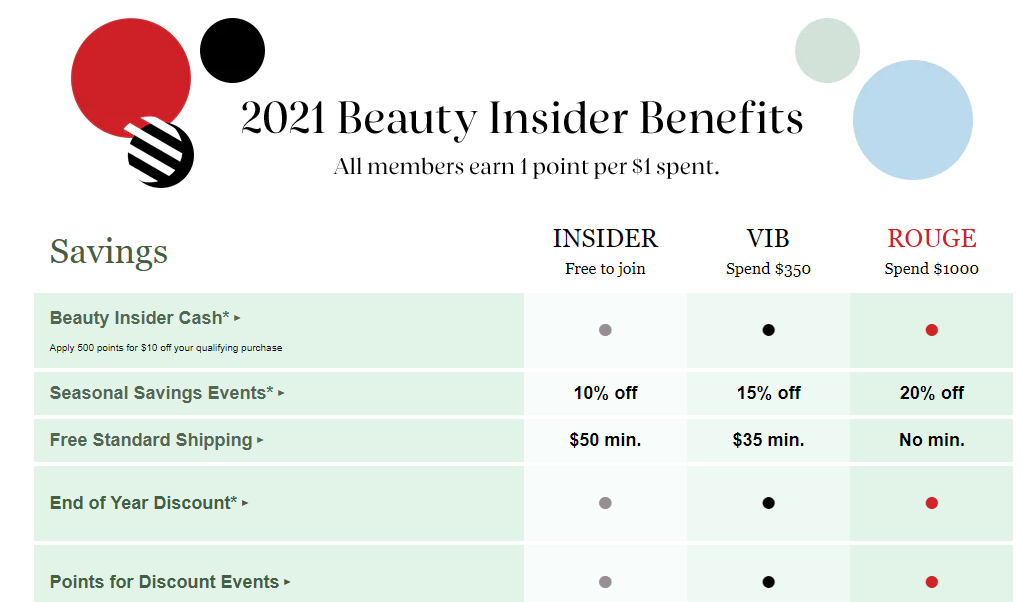
Conversion Funnel Example
Let’s take the example of an eCommerce site that offers customized pet products. We’ll show an example from the site from each stage of the conversion funnel.
Awareness
A potential customer is researching unique gift ideas for her parents and searches “custom pet portraits” on Google. She sees this website as one of the top results on Google’s SERP and clicks. She is now a visitor to the site and part of the conversion funnel.
Interest
Thanks to the carousel banner on the homepage, the lead now sees that the site does, in fact, sell the custom pet portraits that she was looking for. She also notices that they offer a wide variety of pet accessories and she continues browsing.
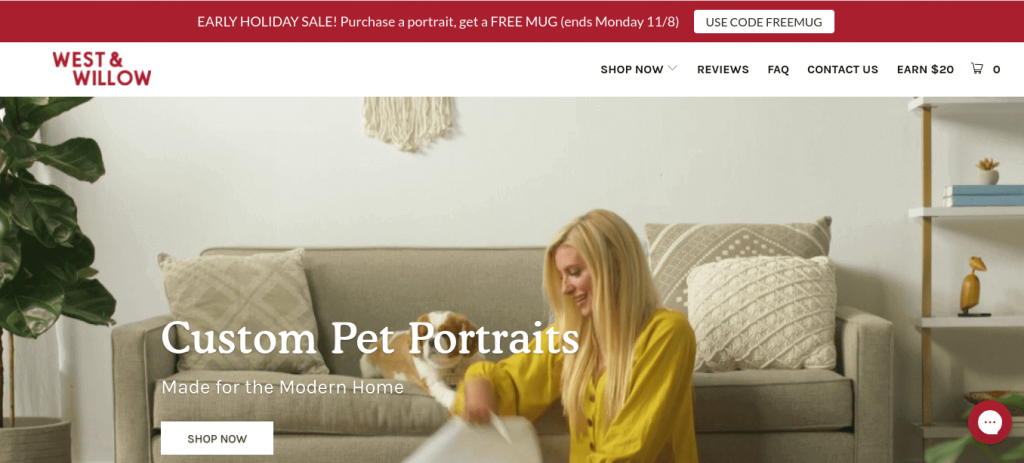
Desire
The lead now sees the social proof on the pet portrait page and is impressed by the acclaim. She isn’t quite ready to purchase but she signs up for the email newsletter and receives a lead nurture sequence showing other pet portraits the business has made.
Action
The lead nurture sequence ends with a coupon and the lead decides to order a pet portrait. She finds the design process easy and intuitive and completes her purchase.
Reengagement
The customer enjoys her purchase so much that she decides to join the business’s affiliate program and begins promoting their products on her social media channels. She has now completed every stage of the funnel conversion.
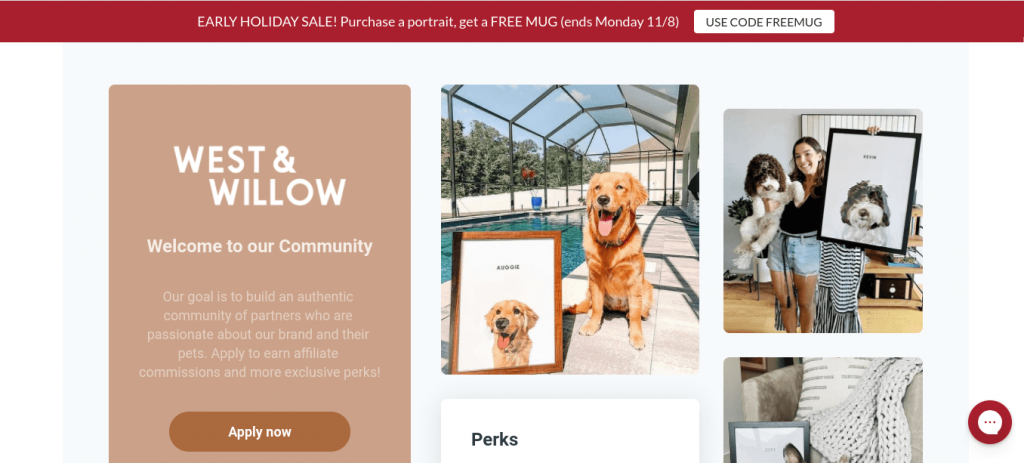
Strengthen Your Conversion Funnels Today
If you operate an eCommerce website, you already have some form of conversion funnel in place, because your goal is to move people from visitors to purchasers.
Conversion funnel optimization can make the difference between a haphazard funnel that leaks prospects everywhere and an intentional, objective-oriented conversion funnel that delivers loyal, repeat customers. Implement some of the tips above to see which strategies can improve your business.

